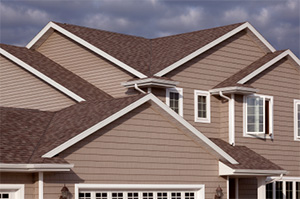
If we use standard segments (12 ft in length and 10 in width), we can work out the total number of vinyl wall panels as: 270.6 ft² / (12 ft × 10 in) = 27.06. Taking into account 10% waste, we can estimate the total amount of material needed to cover such area as: 246 ft² × 110% = 270.6 ft². The final area to cover is equal to: 300 ft² - 54 ft² = 246 ft². Find out the total area of the door and windows: 8 ft × 3 ft + 2 × 3 ft × 5 ft = 54 ft². Calculate the area of raw wall: 10 ft × 30 ft = 300 ft². We consider standard door and window sizes (8' × 3' and 3' × 5', respectively). Let's assume we want to cover the wall of 10 ft in height and 30 ft in width with a single door and a pair of windows. When the number of windows and doors increases, it gets more and more complicated to evaluate the total cost, but with this vinyl siding calculator, it's just a piece of cake! The cost of vinyl panels is usually given as the price per square foot, whereas the cost of all the trim pieces is presented as the price per unit of length. VINYL SIDING PLUS
The length of j-channels equals twice the height of the wall and the width plus twice the height of all windows and doors.The length of the starter strip equals the width of the wall (the bottom part).The length of undersill trim equals the width of the wall (the upper edge counts) and the sum of all windows widths.We recommend buying about 5-10% additional resources. It's usually given as a percentage of the total area to cover. Moreover, it's always worth considering preparing more material, considering the waste that occurs during the installation process. In more general cases, we have to subtract windows and door segments. If you use shapes other than regular ones, you should try our tile calculator!

For the plain one, it's just the area of a rectangle calculated from the height and width of the wall.

The number of vinyl wall panels necessary for covering the entire wall depends on the total square footage of the wall.






 0 kommentar(er)
0 kommentar(er)
